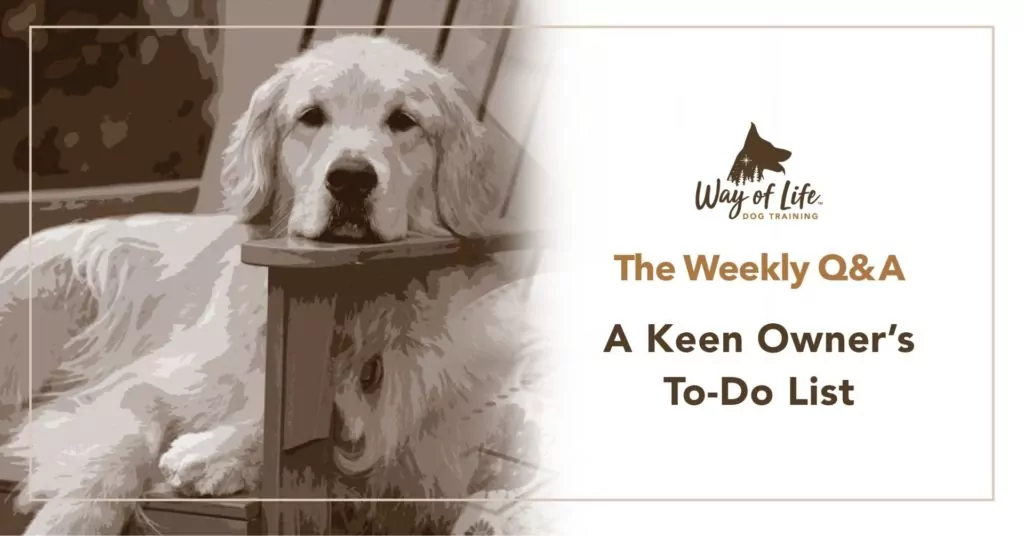
Q: I just adopted a 10-month-old golden retriever. He has a very gentle temperament but did not receive a lot of obedience training at this stage in his life. I have started to do daily training but need some assistance as I want to ensure my dog is as successful and happy as possible! I am looking for at-home training services to assist with getting my pup trained with the following key areas: crate training, leash walking without pulling and recall (without needing to use a Halti), general commands, and not barking for attention.
A: Thank you for reaching out to us about your new adoptee, a teen golden retriever with clearly much to learn! I commend you for reaching out for assistance sooner better than later. Good on you as well to be organized and having a list of items you want to make sure are going well for your dog.
In this response, I will touch on three elements in your question: 1) your focus on obedience training, 2) crating versus crate-training, and 3) walking our dogs without control tools.
First, you’re not alone in believing that obedience training is what will produce a well behaved dog. Many trainers and owners believe that teaching dogs commands early on is what will ensure the dogs become “good” dogs. Training for responsiveness to specific commands is important, no doubt, but it’s not enough. We need think about the dog’s way of life overall. This means going beyond training and talking about raising our dogs.
Second, and related to the point above is whether we crate-train or simply crate the dog. This is an important way-of-life decision that has a profound impact on a dog’s behaviour. Many think that dogs ought to be “crate trained,” meaning dogs ought to be given the time to like their crates and the freedom to be in their crates as long as they like. That’s not what I do with a young dog, a new dog, or a dog with behavior issues of any kind. I simply crate the dog according to a defined schedule, alternating with other activities suited to that particular dog, such as training, exercise, and socialization.
Third, I congratulate you on not wanting to use a control tool on your dog. Before using tools that supress and hurt, let’s first understand why the dog is pulling. Pulling isn’t only a lack of loose leash training; pulling is also a psychological state of a dog that’s not paying enough attention to us, a dog who is hyper perhaps even agitated, and whose physical and mental energy is not well managed. As an example, when you crate and regulate the dog indoors, he is more likely to be responsive to you outdoors. All aspects of your way of life are related and together, they impact your dog’s behavior and not just whether you’ve spent enough time training for that behaviour.
I wish you and your new golden well!